An abundance of squills
This spring, for the first time, I've taken an active interest in wildflowers in St Andrews, and although we're only in March, it's already brought me a lot of joy. In the past I've always enjoyed seeing flowers begin to come out: the transition from snowdrops to crocuses to daffodils to bluebells is a nice pattern to watch, and a happy sign that winter won't last forever. But this year I've paid more attention, and I've been delighted by how many interesting plants are right at my feet when I actually stop to look.
When I go out walking, I've been stopping when I see a flower I don't recognise, and doing my best to identify it. I've been taking Collins British Common Wild Flower Guide out with me, and I can usually get a positive identification, perhaps with some help from Google Lens. I've even kept a little diary of what I've seen on which dates, and seeing new plants spring up each time I go out has been very satisfying.
Lade Braes is a particularly beautiful area, where we are treated each year to carpets of wild spring bulbs, each in their season, all the way along the Kinnessburn from Cockshaugh park westwards. It's my favourite place in St Andrews to walk, and it's where today's story begins.
At the start of March, I noticed these pretty blue flowers appearing all along Lade Braes:

I'd seen them in previous years, and so I looked for them in the Wild Flower Guide, but there was nothing that seemed to match them. I tried Google Lens, and I couldn't settle on an exact species, but it seemed likely that these were squills: six-petalled perennials of the genus Scilla, which my guide didn't have much on. I decided to take a few photos and investigate further later on. There were plenty of these things all the way along the path, so I got plenty of photos.
When I got home and looked more closely at the photos, I was surprised to see that these plants were not actually all identical. The flowers' shapes and colours, the positions of the stamens and the way they were grouped on the stem, made it clear that I had found at least three different species, none of which were in my book, and none of which I could find much reliable information for online. I went back a few days later to get more photos, and I noticed even more variation than the first time.
Finally I snapped and went to Topping and Co., the booksellers on Greyfriars. I flicked through all the wild flower guides I could find and was still disappointed, until I discovered New Flora of the British Isles, by Clive Stace, a 1200-page tome filled with dense technical descriptions of just about every plant in these isles, including a good section on squills. I bought it (an investment) and took it home to study.
I'm delighted to say that, of the 12 species of Scilla described in Stace's book, we have at least 5 growing here in St Andrews. Hold on tight.
First, the easiest one to spot:
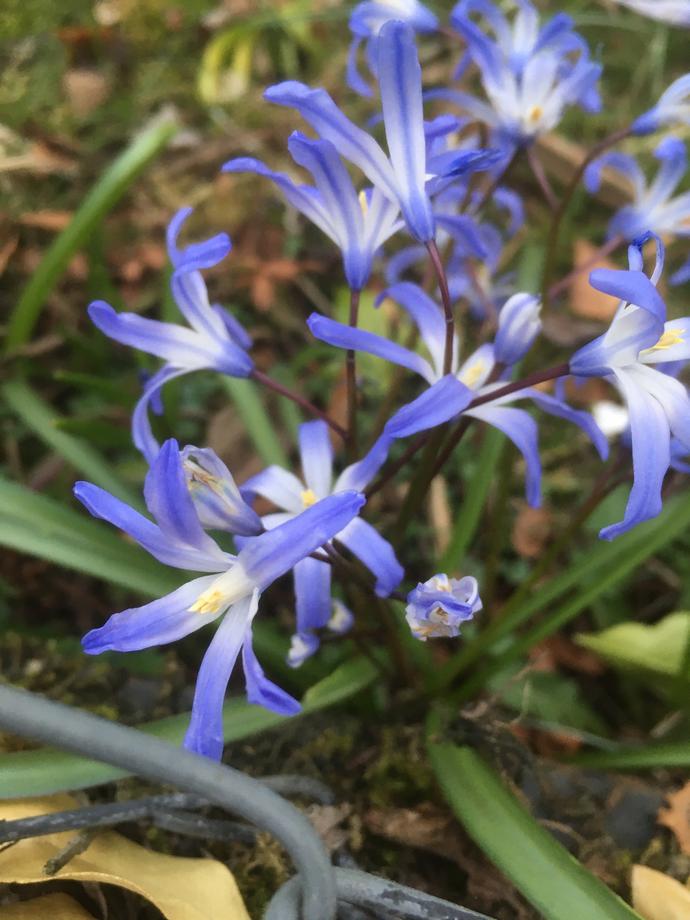
Glory-of-the-snow (Scilla forbesii), the most abundant squill on Lade Braes. Note the long "neck" of the flower, as well as the white-to-blue gradient on its petals, and its stamens gathered in the middle.
Glory-of-the-snow used to be considered a separate genus, Chionodoxa, but sometime in the 1970s its close relation to the squills was noted and it was reclassified as a subgenus of Scilla. Also in the Chionodoxa subgenus is the following:
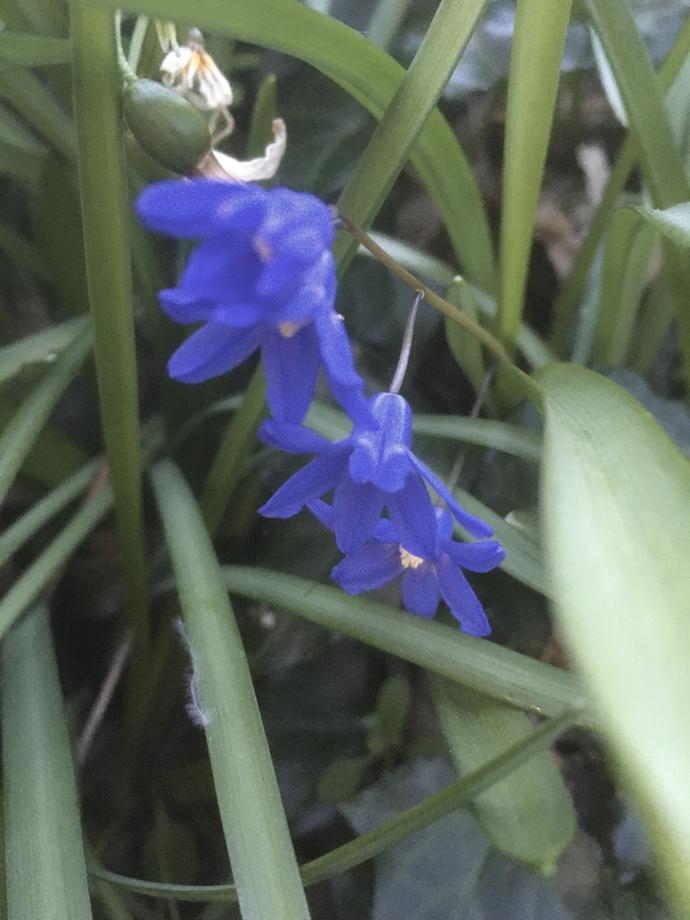
Lesser glory-of-the-snow (Scilla sardensis), smaller than S. forbesii and only a single colour. I could only find a few of these on Lade Braes, but I've since found some in my garden!
Third is a more classic squill, although still not one that appears in common wildflower books:
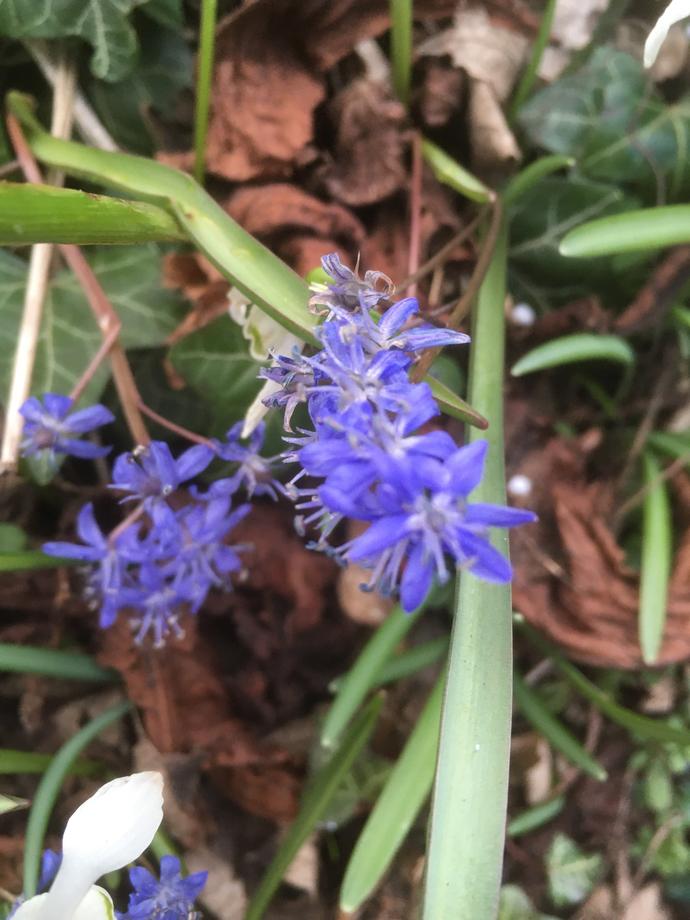
Alpine squill (Scilla bifolia), spotted on the path around Cockshaugh park. No "neck", and with stamens that stick out in six different directions. Many flowers bunched up together on each plant.
The fourth and final species gets more abundant as you travel west along Lade Braes, forming nice "carpets" up the bank between the two paths above the burn:
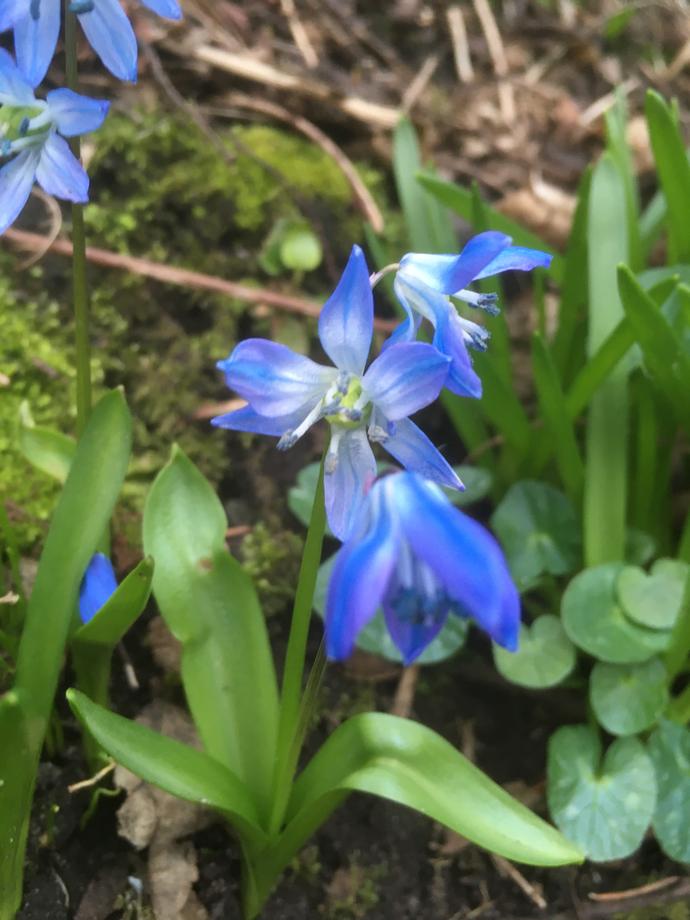
Siberian squill (Scilla siberica), just west of Cockshaugh park. Flower hangs down, with distinctive petal shape and a yellow ovary tucked between the prominent stamens. Note that "Siberian" is a misnomer: it's native to southwestern Russia, the Caucasus, and Turkey.
I also found one more squill, which I had trouble identifying. The key in New Flora didn't quite work, with some features matching the alpine squill and others matching glory-of-the-snow. I was baffled, until I spotted a note in the book mentioning hybrids, and things started to make sense.
For anyone who doesn't know, in biology, a hybrid is an organism resulting from two different species cross-breeding, and will generally have some characteristics of each of the parent species. Some well-known plants and animals are hybrids – for example, a mule being a cross between a horse and a donkey – and some are even fertile enough to establish stable populations.
The book mentioned one notable hybrid squill: a cross between the alpine squill and glory-of-the-snow, the exact two I was torn between. I looked it up online and found this RHS entry, which confirmed it. I give you the hybrid squill!
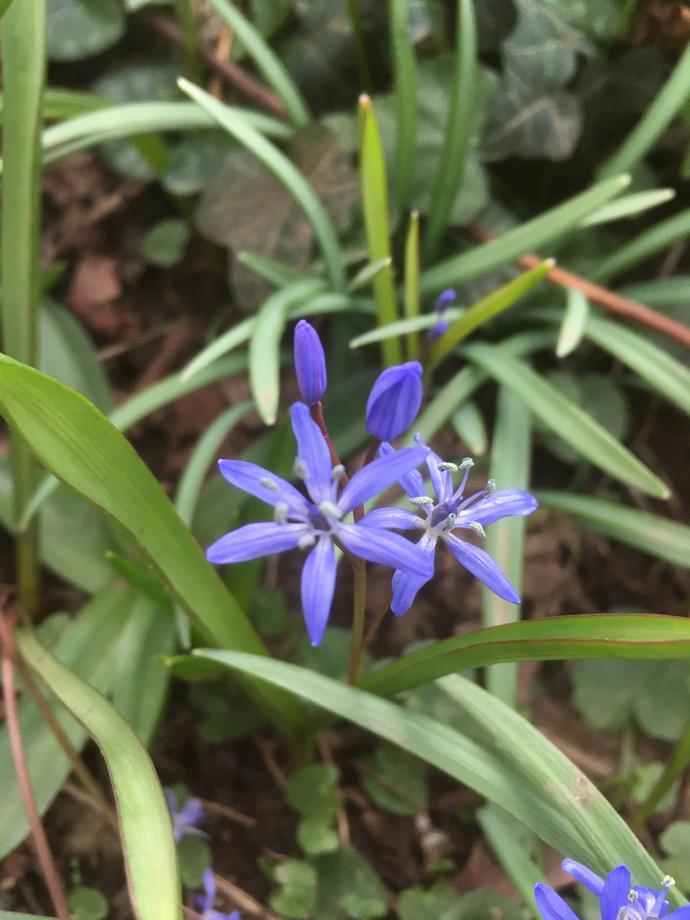
Hybrid squill (Scilla × allenii), a cross between S. bifolia and S. forbesii, found occasionally on Lade Braes near both parent species. Note the prominent stamens like S. bifolia, but with petals longer and joining together in a "neck" like S. forbesii.
This hybrid is fertile and popular in gardens, so it may have escaped or been planted deliberately as-is. However, both parent species are present nearby, and according to Wikipedia this hybridisation has been seen to occur independently in multiple places. So I wonder if the plants have just hybridised naturally right here in St Andrews!
So there we are: at least 5 different squills growing happily together in our town. I have no idea whether these are truly wild or were planted by the council or volunteers; I do know that several of them are widespread in many nearby gardens, so they do at least seem to spread easily.
If anyone knows anything more about these plants, or can spot any mistakes I've made in my identification, I'd love to learn more. I'm not a botanist, and I had to learn a lot to manage the identifications above.
In the meantime, I believe these should be flowering until April, so you should still have time to go and see them if you're nearby. Treat yourself!
Comments